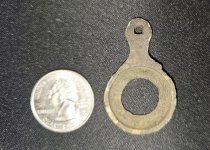Hi guys,
I am an electrical engineer with a hobby of mechanical engineering. My wife is a software engineer who does most of the microcontroller programming and UI in our past projects.
We have been interested in gold prospecting just for fun for several years, and watching Bering Sea Gold has us thinking of merging some of our past robotic projects with the idea of gold dredging.
It is somewhat hard to calculate if this is a viable project. The fun factor would convince me to build it if I have a chance of at least recouping materials costs. I already have a very large cnc bedmill and lathe in my shop, plus plenty of electronic test equipment.
The robot would allow the dredge hose (considering a 6 inch hose) to be remotely operated underwater with several cameras and lighting to give feedback to the user on the surface. Ideally it would be very suited for dredging under the ice as the entrance hole would not need to be much larger than 12 inches and possibly could be made with an auger. This would save time when spot checking several sites. All of the exposed parts of the robotic section would be made of stainless, delrin and rubber.
I intend for the robot to be controlled by a human but will have some canned sweep programs to allow it to run semi-autonomously. It should be able to grasp or nudge boulders up to about 300 pounds.
One of the sticking points is actuators. I am unsure right now what would be the best choice. I have considered hydraulic, pneumatic, hydraulic using pneumatic cylinders, and electro-mechanical (ballscrew/servomotor) actuators. It might be best to proceed on this project by developing the actuator and cycling it under load at depth pressure in salt water for several hundred hours to make sure it is robust. Once the actuator is proven, the rest of the robot is somewhat trivial as is the programming.
Anyway, if you have any ideas or suggestions as to approaching this project, I would be happy to hear them.
I am an electrical engineer with a hobby of mechanical engineering. My wife is a software engineer who does most of the microcontroller programming and UI in our past projects.
We have been interested in gold prospecting just for fun for several years, and watching Bering Sea Gold has us thinking of merging some of our past robotic projects with the idea of gold dredging.
It is somewhat hard to calculate if this is a viable project. The fun factor would convince me to build it if I have a chance of at least recouping materials costs. I already have a very large cnc bedmill and lathe in my shop, plus plenty of electronic test equipment.
The robot would allow the dredge hose (considering a 6 inch hose) to be remotely operated underwater with several cameras and lighting to give feedback to the user on the surface. Ideally it would be very suited for dredging under the ice as the entrance hole would not need to be much larger than 12 inches and possibly could be made with an auger. This would save time when spot checking several sites. All of the exposed parts of the robotic section would be made of stainless, delrin and rubber.
I intend for the robot to be controlled by a human but will have some canned sweep programs to allow it to run semi-autonomously. It should be able to grasp or nudge boulders up to about 300 pounds.
One of the sticking points is actuators. I am unsure right now what would be the best choice. I have considered hydraulic, pneumatic, hydraulic using pneumatic cylinders, and electro-mechanical (ballscrew/servomotor) actuators. It might be best to proceed on this project by developing the actuator and cycling it under load at depth pressure in salt water for several hundred hours to make sure it is robust. Once the actuator is proven, the rest of the robot is somewhat trivial as is the programming.
Anyway, if you have any ideas or suggestions as to approaching this project, I would be happy to hear them.
Upvote
0





